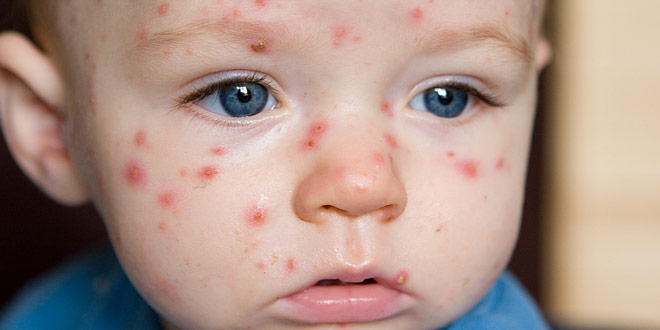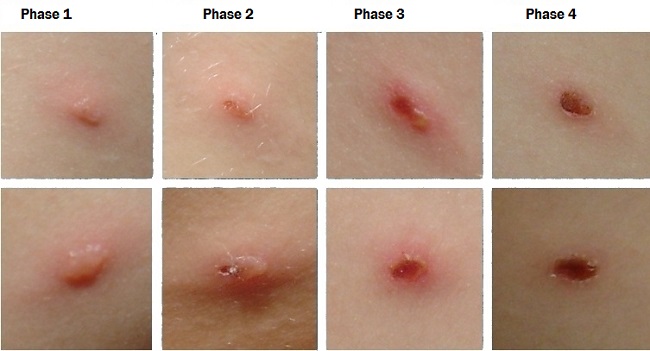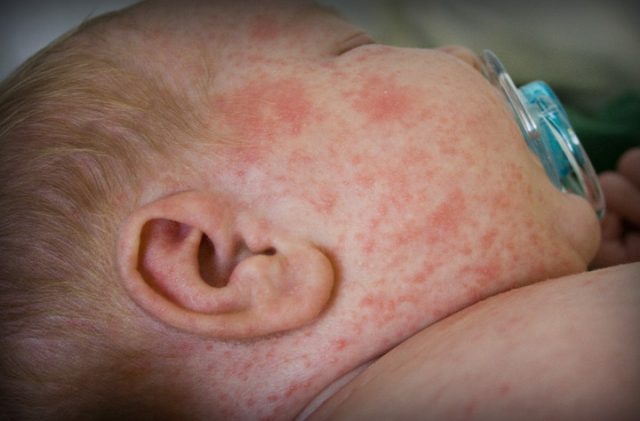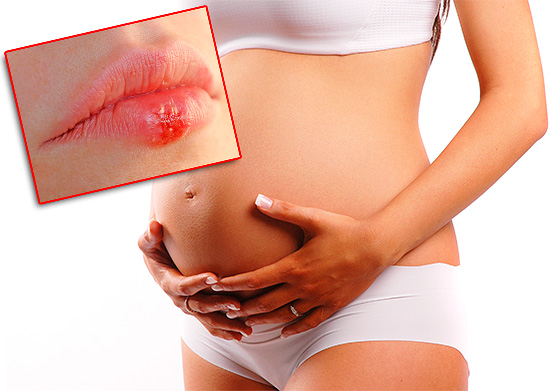Content
Infectious diseases for children give parents a lot of trouble, especially if they occur in a latent form. That is why timely diagnosis is very important at the very early stage, when the disease is just beginning. Today we’ll try to figure out how chickenpox differs from rubella.

Chicken pox in a child
Chickenpox – This is the most common childhood infectious disease. They can only be ill once in a lifetime, after which a person develops lifelong immunity. The route of transmission of the disease is airborne, hence it got its name. If a child gets sick with chickenpox in an institution, then it becomes contagious to other children. No quarantine can protect babies who have been in contact from chickenpox, since the child becomes contagious the day before the onset of skin manifestations. By the time the first rashes appear on the skin of a small patient, he already manages to infect many children.

The incubation period for chickenpox is seven days, after this period the patient has a fever up to 39-40 ° C, the first signs of a rash, weakness, malaise and headache appear. First, small pink spots appear on the skin, the number of which increases dramatically in a few hours. Over time, the spots turn into bubbles with liquid contents, which in no case can be squeezed out.

The main nuisance that rashes give the patient is itching, because when they are combed, the infection gets into the wounds. The causative agent of chickenpox is the herpes virus, so it has no specific treatment. The rash is smeared with brilliant green, sometimes antiviral drugs are added to the treatment, and when an infection is attached, antibiotics.
Rubella in a child
Rubella Is an acute infectious disease characterized by small spotted exanthema, moderate fever, generalized lymphadenopathy and fetal damage in pregnant women.

Togavirus disease is caused, which, unlike other viruses, contains neuraminidase. The incubation period for rubella lasts 2-3 weeks. At first, the patient may notice a slight weakness, headache, pain in the muscles and joints, malaise. Rubella temperature most often remains subfebrile, but can sometimes rise to 38-38.5 ° C.

It lasts no more than 3 days. From the first days of the disease, the patient manifests generalized lymphadenopathy, a mild catarrh of the respiratory tract and mild hyperemia of the pharynx. Sometimes there is pain in the occipital and posterior cervical lymph nodes. Most often, these symptoms are mild, and therefore a suspicion of rubella occurs only when a rash appears. Rubella treatment is purely symptomatic: antipyretic, general tonic and vitamins.
A distinctive feature of rubella is that the rash appears simultaneously throughout the body
So, we found out that rubella and chickenpox are infectious diseases that are more common in childhood. Chickenpox manifests itself in the form of reddish spots, which subsequently turn into bubbles with liquid contents.

With this disease, mild malaise and headache occur. Rubella manifests itself in the form of a pink rash, and is also characterized by the appearance of generalized lymphadenopathy, mild catarrhal symptoms and hyperemia of the pharynx.
How to distinguish rubella from chickenpox
1. With chickenpox, a polymorphic rash is most often observed, that is, spots, crusts, and vesicles are simultaneously present on the skin. With rubella, only a pinkish rash can be observed.
2. With chickenpox, a temperature rise of up to 40 ° C can be observed, with rubella, the temperature occasionally reaches 39 ° C.
3. With chickenpox, the rash is lubricated with brilliant green, with rubella this is not required.
4. Rubella virus is dangerous during pregnancy; chickenpox virus is not particularly dangerous for pregnant women.
5. Chickenpox can be complicated by inflammation on the skin, this does not happen with rubella.
6. Chickenpox rarely occurs with catarrhal phenomena, with rubella, redness of the pharynx, catarrh of the upper respiratory tract, and generalized lymphadenopathy almost always occur.









